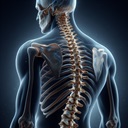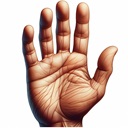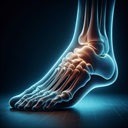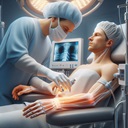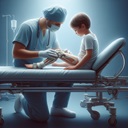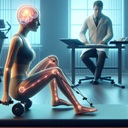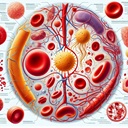Pain in the lower back may be due to various problems in any part of the complex and intertwined network of spinal muscles, nerves, bones, tendons and discs in the lumbar part of the spine.
Common causes include:
- Irritation to large nerve root in the lower back
- Irritation to smaller nerves that are located in the lower back
- Strained two large muscles in the lower back
- Broken bones, ligaments or joints
- Degeneration of the intervertebral disc
Irritation or problem in any part of the above can cause pain in the lower back and pain that spreads to other parts of the body. Recognizing symptoms and determine a diagnosis that indicates the underlying cause of the pain is the first step to recovery and reduce pain.
The most common causes of pain in the lower back in adults
Adults (30-60 years old) are more likely to experience back pain in the spinal disk area (for example: lumbar disc herniation or degenerative disc disease or torn muscles and other soft tissues).
Elderly (over 60 years) are more likely to suffer from pain as a result of degeneration (eg osteoarthritis and spinal stenosis) or due to fractures.
When to seek help for lower back pain
In most cases, pain in the lower back does not require immediate intervention. However, if the pain or trauma is accompanied by the following symptoms you need to seek medical attention:
- A high temperature or fever
- Sudden weight loss
- Weakness in the legs
- Incontinence of urine or stool
- Severe stomach pain
In cases where it is necessary to treat immediately, the doctor will examine the possible causes of pain, including all types of back infection, tumor or fracture.
Most often young people (30-60 years old) are more likely to suffer from back pain due to muscle strain in the lower back or in the area of the disc. Usually this is the lumbar disc herniation or lumbar degenerative disc disease.
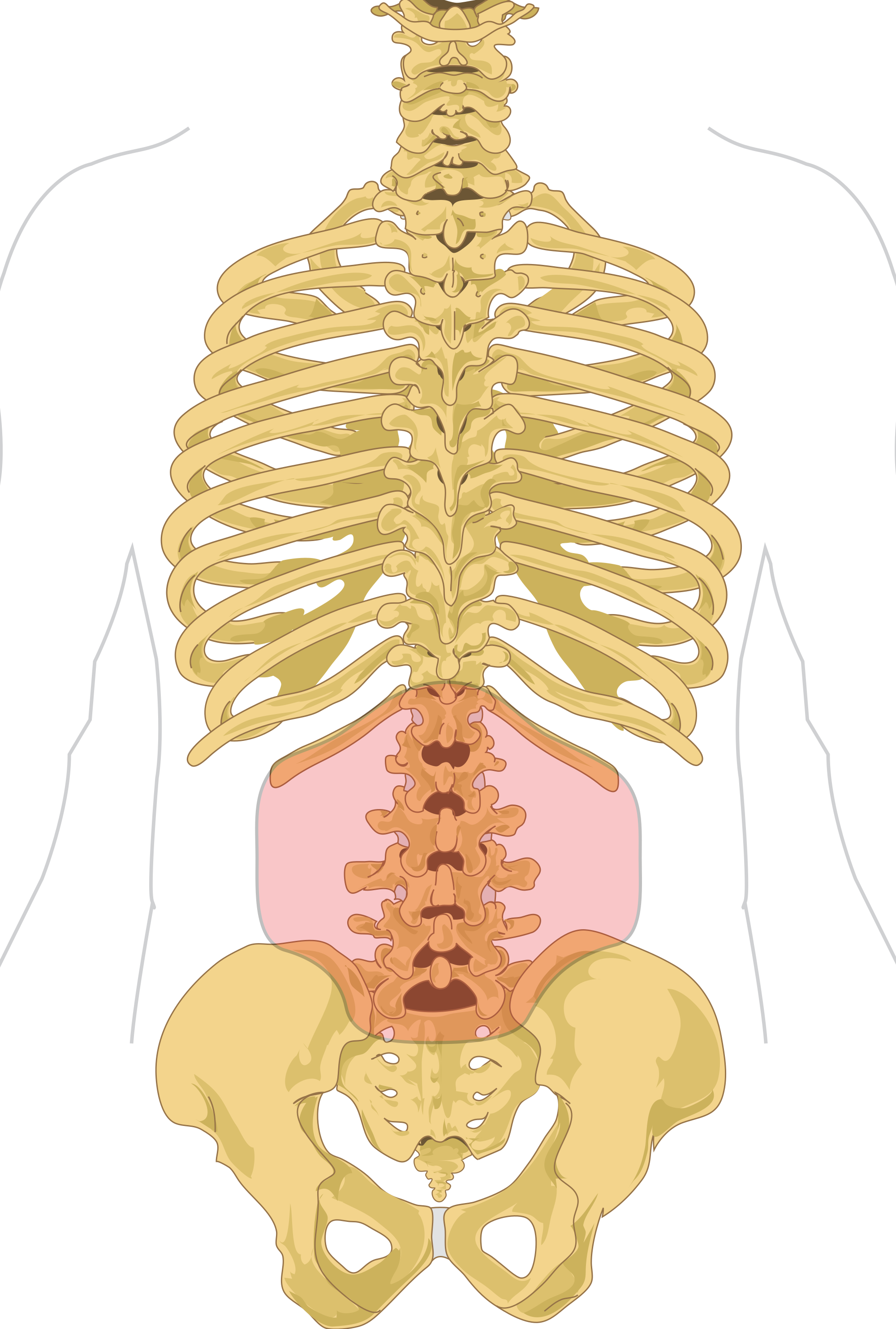
The next part provides a description of typical symptoms and their possible causes in young adults.
Main Symptoms are:
Heavy or expressive pain in the lower back after an activity, a sudden movement or lifting heavy objects.
Symptoms may include any combination of the following symptoms:
- Difficulties in movement that can be strong enough to enable walking or standing
- The pain that extends around the groin, buttocks or thighs but rarely below the knee
- Pain that is constant and dull
- Muscle spasms
- Local inflammation on touch
Possible causes:
- tightening of the back muscles
- Stretching the back muscles or ligaments is one of the most common causes of acute pain in the lower back
- Lifting heavy objects, twisting or sudden movement can cause stretching of muscles or ligaments or the formation of microscopic tears
Symptoms:
pain in the lower back, which extends to the buttocks, legs or feet (sciatica)
- The pain is generally constant (as opposed to the pain that disappears after a few days or weeks)
- Pain may be stronger in the legs and feet than in the back
- Basically, the pain occurs in one leg or one side of the buttocks
- The pain is usually worse after long periods of standing or sitting
- Severe pain (burning, burning) rather than a mild and low-pain
- Weakness, numbness or difficulty moving the feet or legs
Common causes of back pain: lumbar disc herniation
SYMPTOMS: Chronic low back pain that is worse in certain positions and movements
Symptoms may include any combination of the following symptoms:
- Weak or constant pain in the lower back intermittent episodes of severe pain or muscle spasms for a few days to a few months
- Chronic pain, which can range from strong to weak
- Back pain that gets worse while sitting
- Once while walking or even running feeling better than when you sit or stand
- Changing position eases pain
Common causes: degenerative disc disease
Lumbar degenerative disc disease can also occur in people aged 20 years. When lumbar discs between the vertebrae begin to decompose the damaged disc causes inflammation and slight instability in the lower back, resulting in pain, muscle spasms, and sometimes sciatica.
SYMPTOMS: deep pain in the lower back that gets worse when you stand or walk
Symptoms may include any combination of the following symptoms:
- Pain which extends along the buttocks and back of the thigh (also known as sciatica or radicular pain)
- Pain that gets worse when you lean backwards
- Pain decreases when seated or leaning
- The feeling of heavy legs and numbness or tingling, especially after walking
- Tight hamstrings, making it difficult to bend and reach for your toes
POSSIBLE CAUSES: nerve compression
Compression of the nerve occurs when the vertebrae in the lower back slips forward and compresses the nerve located under the disk.
Symptoms: low back pain, buttocks or groin
Symptoms may include any combination of the following symptoms:
- The feeling of pain
- The pain may occur in the hip, groin, thigh and lower back
- The pain worsens when you sit and feel relieved when you lie down or lean
- Changing position often relieves pain
Common causes: sacroiliac joint
Disease or damage to the sacroiliac joint occurs due to too much or too little movement sacroiliac joints – the joints that connect the sacrum at the base of the spine to the hips.
In young adults arthritis can also occur and other defects are generally causes of pain in the elderly.
The two most common causes of pain in the lower back pain in older people are osteoarthritis and spinal stenosis.
Symptoms:
- Pain and stiffness in the lower back which are the most expressive in the morning and evening
- The pain which interrupts sleep
- The pain is most expressive in the morning and again at the end of the day
POSSIBLE CAUSES: osteoarthritis
Osteoarthritis, also called degenerative arthritis or osteoarthritis of the spine is a degenerative condition that develops gradually.
SYMPTOMS: leg pain that occurs when walking or standing
Symptoms may include any combination of the following symptoms:
- Pain when walking long periods
- Temporary relief in the lower back when you sit
- Symptoms develop gradually
- SWeakness, numbness and tingling that extends from the lower back to the buttocks and thighs (sciatica)
POSSIBLE CAUSES: lumbar spinal stenosis or degenerative nerve compression
Spinal stenosis and degenerative nerve compression can squeeze nerve at the point where it is discharged from the spine. When standing or walking increases the pressure on the nerve and leads to pain in the leg.
SYMPTOMS: Sudden pain. LIMITED FLEXIBILITY, REDUCTION OF HEIGHT
Following Involved:
- The sudden appearance of back pain
- Standing or walking generally makes the pain worse
- The pain decreases when you lie on your back
- Reduction of height
- Limited spinal flexibility
- Deformity or disability
POSSIBLE CAUSES: COMPRESSION SPINE DUE TO FRACTURE
As a rule, compression fracture should be considered in case of any sudden appearance of back pain in people over 50 years, especially in postmenopausal women with osteoporosis and in men and women who have been using corticosteroids for long periods of time.
Rare causes of pain in the lower back
Although they are less common in relation to the above, and these issues can cause low back pain:
- Piriformis syndrome
- Infection
- Spinal tumor
- Fibromyalgia
- Ankylosing spondylitis
- Coccydynia
Finally, it is important to note that one’s attitude and circumstances of vital statistics that affect the level and duration of pain. For example, people who are under stress, depression or back injury to a greater danger to their pain becomes chronic. Patients who are not stressed and do not have psychological problems, are more likely to recover with compatible treatment.
The causes of low back pain can be complex. There are many spinal structures that can cause pain.
Diagnosis will usually indicate one of three types of pain in the lower back:
- Axial pain in the lower back is the most common type of back pain. It occurs only in the lower back and not extending to the buttocks or legs. Mostly it is short-lived and runs for 6 to 12 weeks but can last longer and become chronic.
- Lumbar radiculopathy (sciatica) is the second most common type of pain caused by problems in the lower back.
- Pain in the lower back that extends to other parts of the body to the buttocks, groin and thigh but rarely below the knee
Classification of pain is important in order to prescribe an appropriate treatment plan. Patients are encouraged to seek diagnosis from their doctor as to quickly prescribe adequate treatment.


